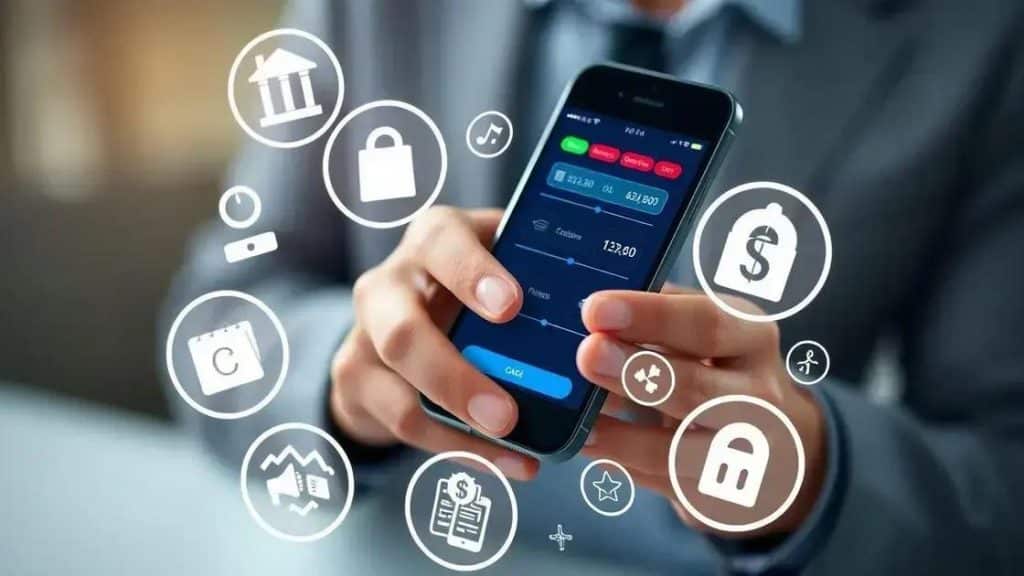Peer-to-peer payments: a guide to seamless transactions

Peer-to-peer payments enable direct money transfers between individuals using mobile apps, providing fast transactions, low fees, and enhanced security while allowing users to manage their finances conveniently.
Peer-to-peer payments are changing the way we handle money in our daily lives. Have you ever wondered how easy it can be to send cash to a friend or settle a bill? Let’s dive in and explore this innovative method!
Understanding peer-to-peer payments
Understanding peer-to-peer payments is essential in today’s digital age. These payments have changed how people exchange money, making transactions faster and more convenient. Have you ever sent money to a friend with just a few taps on your phone? That’s the power of peer-to-peer payment systems.
The basics of peer-to-peer payments
Peer-to-peer payments allow individuals to send money directly to each other without the need for a traditional financial institution. This system has grown popular due to its simplicity and efficiency. Users can transfer funds instantly using their smartphones or computers.
How do peer-to-peer payments work?
Generally, a user needs to create an account on a peer-to-peer payment platform. After linking their bank account or card, money can be sent by simply entering the recipient’s details. Transactions are usually confirmed instantly, making it a quick way to settle bills or send gifts. Here are a few key features:
- Instant transfers: Money moves immediately from one account to another.
- Low fees: Typically, these services charge minimal fees, or none at all.
- User-friendly interfaces: Most apps are designed to be straightforward, even for those new to technology.
As people increasingly move away from cash, peer-to-peer payments have become a preferred choice for many. These systems often use encryption to ensure that your money and information are safe during transactions.
The impact of peer-to-peer payments
The rise of peer-to-peer payment platforms has shifted how financial transactions are perceived. More people are embracing mobile payment systems, leading to decreased reliance on cash and checks. This trend may also encourage small businesses to adopt new technology, helping them compete in a digital marketplace.
In addition, peer-to-peer payments enhance financial inclusion. Individuals without access to traditional banking can benefit from these platforms. From college students to freelancers, many are finding ways to integrate these services into their everyday lives.
Challenges of peer-to-peer payments
While peer-to-peer payments offer numerous advantages, they also come with challenges. Users must be cautious of scams and fraud. Researching the platform before transferring money is crucial. Additionally, while transaction methods are generally secure, users should always protect their personal information.
In summary, understanding peer-to-peer payments and their implications is beneficial for anyone looking to navigate today’s financial landscape. As the technology evolves, it’s essential to stay informed about best practices in using these innovative payment systems.
How peer-to-peer payments work

Understanding how peer-to-peer payments work helps users experience their full potential. These systems facilitate direct money transfers between individuals without the involvement of banks. Imagine quickly sending money to a friend for dinner or receiving cash for a concert ticket—this technology makes it all possible.
How the process begins
To start using a peer-to-peer platform, you need an account. Most applications require you to enter some personal details and link your bank account or credit card. Once set up, you can send money in just a few taps.
Steps involved in a transaction
When sending a payment, follow these easy steps:
- Open your chosen app.
- Enter the recipient’s information, like their phone number or email.
- Input the amount you wish to send.
- Confirm the transaction for processing.
After you hit the send button, the transaction is usually completed instantly. The recipient can see the funds in their account right away. This speed is one of the main reasons why so many people use peer-to-peer payments.
Security measures taken
Safety is a major concern for users. To protect against fraud, most platforms use encryption and other security features. When making transactions, these systems ensure your information remains confidential. Some apps also allow users to set up two-factor authentication to enhance security.
As peer-to-peer payments become more popular, understanding their operation is crucial. These systems not only save time but also provide a safe way to manage personal finances. The ease of sending and receiving money is revolutionizing how we think about transactions.
Benefits of using peer-to-peer payments
There are many benefits to using peer-to-peer payments, and understanding these advantages can help you decide if they’re right for you. One of the main perks is the convenience they offer. You can send or receive money anywhere and at any time using your smartphone. No more waiting in line at a bank or ATM!
Speed of transactions
Transactions are completed rapidly, often instantly. This speed allows you to settle bills or share expenses on the spot. Whether you’re splitting a dinner bill or paying your friend back for concert tickets, these apps make financial exchanges smooth and hassle-free.
Low or no fees
Most peer-to-peer payments have low fees, if any at all. Many platforms offer fee-free transactions, which can save you money compared to traditional banking methods. This cost-effectiveness is especially beneficial for frequent transactions.
User-friendly design
Many of these applications are designed to be user-friendly, making them accessible to everyone, regardless of their tech skills. You can easily navigate the app and complete transactions with a few taps. This simplicity encourages more people to adopt digital payments.
Another significant benefit is that you often don’t need a bank account to use these services. Some platforms allow users to sign up with just an email address or phone number, making it easier for those who may not have access to traditional banking. This opens up financial options for many individuals.
In summary, using peer-to-peer payments enhances the way we manage money, making transactions quicker, cheaper, and more accessible. As technology continues to evolve, these benefits are likely to attract even more users.
Challenges and security in peer-to-peer payments

While peer-to-peer payments offer many advantages, they also come with certain challenges and security risks. Understanding these aspects is crucial for users. One main concern is the potential for fraud. Scammers may pose as friends or family, tricking you into sending money before you realize something is wrong.
Common security threats
Whether you’re using an app for transferring money or making a purchase, it’s important to recognize possible security threats. Here are some common issues:
- Phishing attacks: Scammers may send fake emails or texts that look real to steal your login information.
- Account hacking: If your account isn’t secured, hackers might gain access, leading to unauthorized transactions.
- Unverified users: Sending money to someone you don’t know can lead to losing your funds.
Adopting certain safety measures can help mitigate these risks. For instance, enabling two-factor authentication adds an extra layer of security. This means you must enter a code sent to your phone in addition to your password, making it less likely for someone to hack into your account.
Protecting your information
When using peer-to-peer payments, it’s essential to keep your personal information safe. Always update your software to ensure you’re using the latest security features. Avoid using public Wi-Fi for financial transactions, as this can expose you to theft.
Additionally, familiarize yourself with the platform you choose. Ensure it has proper security measures and a reliable reputation. Reading reviews and understanding its policies can prevent unpleasant surprises.
By recognizing the challenges and taking necessary precautions, you can confidently use peer-to-peer payments and enjoy their benefits, all while keeping your financial information safe.
FAQ – Frequently Asked Questions about Peer-to-Peer Payments
What are peer-to-peer payments?
Peer-to-peer payments allow individuals to send money directly to each other using mobile apps or online platforms, without needing a bank.
How secure are peer-to-peer payment apps?
While they are generally safe, users should be aware of potential fraud and should take precautions like using two-factor authentication.
Are there fees for using peer-to-peer payments?
Many peer-to-peer payment platforms offer low or no fees for transactions, making them a cost-effective way to transfer money.
Can anyone use peer-to-peer payment services?
Yes, most services are accessible to anyone with a smartphone, often requiring just an email or phone number to sign up.





